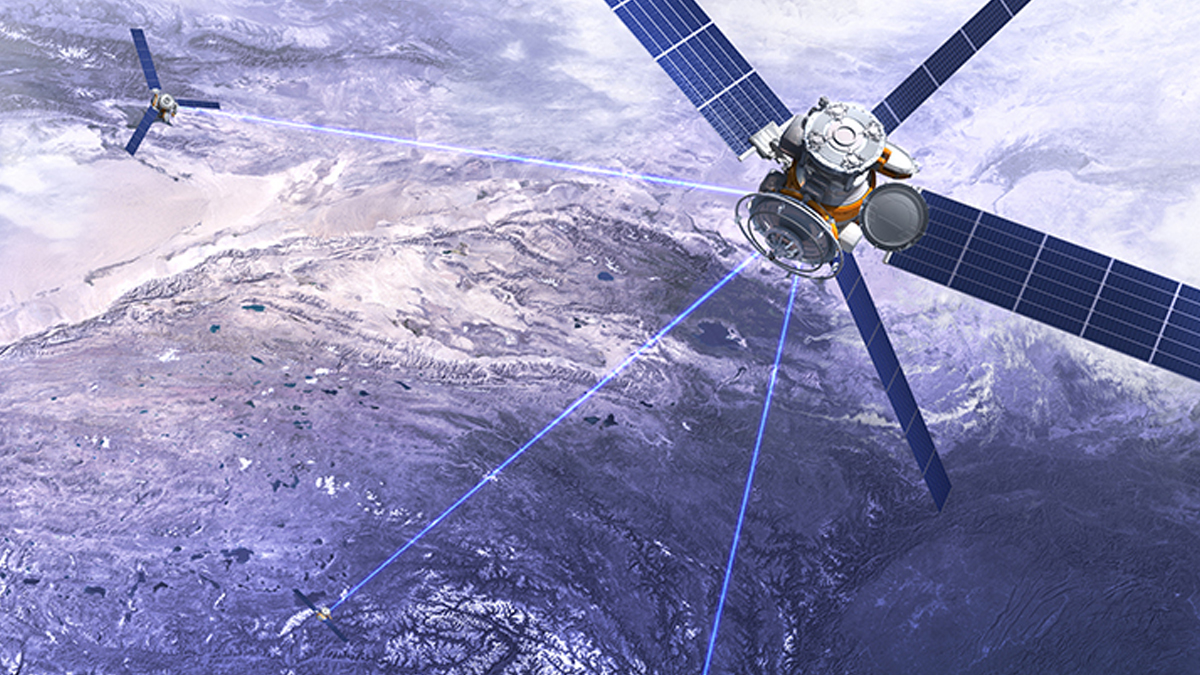
Recent years have brought growing demand for enhanced inter-satellite data routing, connectivity and communications services in modern warfighting missions. Having a web of interconnected assets in space that can provide resilient, satellite-based capabilities that stretch beyond the ground segment is becoming increasingly crucial to the U.S. military.
As a result, the U.S. Department of Defense (DoD) is seeking to optimize its space-based architecture by moving more network intelligence and routing capabilities from the ground to space by leveraging an Internet-type infrastructure known as an “outernet.”
As Laura McAndrews, a spokesperson for the U.S. Space Force, explained, the creation of interconnected satellite networks in space is key to ensuring satellite capabilities are available when and where the mission requires them.
“The DoD and commercial industry have been connecting space and ground systems to meet customer and military service needs since the inception of satellite networks and systems,” McAndrews said. “Per the U.S. Space Force Space Data Network Objective Force Design, the DoD is advancing commercial technologies and fielding systems to increase inter-satellite connectivity in order to increase their reliability and resilience.”
The DoD has already made progress towards adopting an outernet infrastructure. Last December, the U.S. Navy announced a contract with Rivada Space Networks to incorporate the company’s outernet.
Brian Carney, senior vice president for corporate communications at Rivada, said an outernet will enable the DoD to have greater control over how it moves its data in space, which will enhance security for communications.
“An outernet like Rivada’s reduces the attack service for critical communication and improves data sovereignty by keeping traffic in orbit from origin to destination, thus avoiding transit or peering points where it may be subject to interception or diversion,” Carney said. “It reduces latency over long distances. Communications on the high seas would not be limited by local availability of gateways. For example, the Navy can communicate among ships, or between ships and central command without superfluous round-trip data routes.”
But what truly differentiates these outernets from traditional satellite networks, and how will they benefit the DoD?
Delivering Greater Data Control to the Military
According to McAndrews, one of the major benefits a space-based outernet will provide to the DoD is data path diversity.
“Enhancing network interconnectivity between different systems promotes diverse communications paths to move data where it is needed, especially in denied or contested operational environments,” she said.
“Enhancing network interconnectivity between different systems promotes diverse communications paths to move data where it is needed, especially in denied or contested operational environments.” —Laura McAndrews, U.S. Department of Defense
An outernet architecture also could simplify and expedite the operational and mission planning processes required for today’s military deployments. But just because an outernet reduces the need for terrestrial infrastructure doesn’t mean the ground segment becomes redundant or unnecessary.
Industry’s Role in the Military’s Outernet
Industry has always been a pivotal supporting player in the DoD’s space-based architectures and initiatives, and it will continue to be when the DoD stands up its outernet.
“The DoD is leveraging commercial technology innovation to accomplish this objective,” McAndrews said. “Having a robust commercial marketplace for this capability helps the DoD avoid having to develop and build this technology and sustain its own space-ground networked architecture.”
Industry will also be key in achieving the DoD’s goal of having an outernet that provides greater path diversity for data routing that leverages both military and commercial satellites to find the best available route.
And despite the primary goal of outernets being the migration of these capabilities to run and operate in space, the ground segment will still be a critical outernet infrastructure component. According to McAndrews, the ability to interconnect constellations via an outernet will require linking disparate ground systems to ensure end-to-end capability through the entire network.
Despite the primary goal of outernets being the migration of these capabilities to run and operate in space, the ground segment will still be a critical outernet infrastructure component.
“A space network requires interoperable ground connectivity and user terminals that can connect to different constellations, as well as a robust network orchestration management capability,” she said.
Commercial company involvement in outnernet deployment could potentially speed the pace at which government projects tend to operate.
Rivada has announced plans to kick off its outernet project with test satellites in low-Earth orbit in 2026 and launch operational satellites at the top of 2027.
“The military and federal government have long bought commercial satellite services alongside owned infrastructure,” Carney said. “We expect that not only to continue, but to expand. Our Layer 2 architecture means that government customers can control both endpoints of their data paths and encrypt traffic end-to-end. Buying the outernet-as-a-service creates redundancy, as it allows the government to maintain multiple data paths.”
McAndrews agrees that the built-in innovation and standardization that industry provides to the DoD is extremely valuable to initiatives like outernets.
“The DoD is leveraging commercial innovation, standards and infrastructure to potentially reduce costs and time required to fully develop our own integrated, networked architecture,” she said. “Mature commercial solutions will be leveraged as much as possible to meet our unique mission requirements.”
Explore More:
Power Plays: The Push for European Space Sovereignty
Dogfighting in Space: The Future of Maneuver Warfare
Out of the Silos: DoD-Commercial Initiatives Accelerate SDA Threat Sharing
4 Takeaways: Col. Richard Kniseley of Space Systems Command on Military-Industry Partnerships
